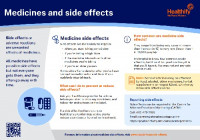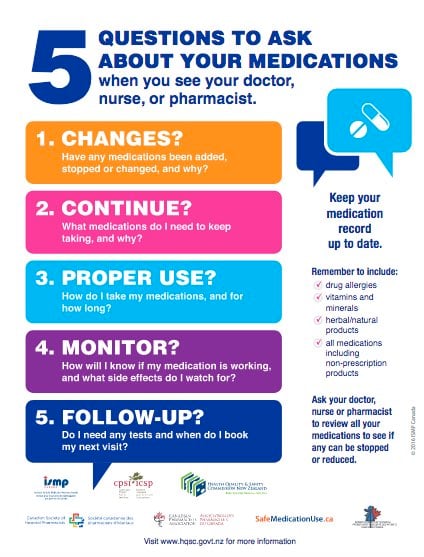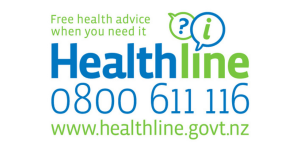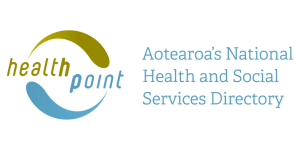Felodipine
Sounds like 'fel-oh-di-peen'
Key points about felodipine
- Felodipine is used to treat high blood pressure and angina (chest pain).
- Felodipine is also called Plendil ER® or Felo ER®.
- Find out how to take it safely and possible side effects.

Felodipine is used to treat high blood pressure and angina (chest pain). It belongs to a group of medicines called calcium-channel blockers.
Felodipine works by relaxing your blood vessels so blood can flow more easily. This lowers your blood pressure. The improved flow of blood and oxygen to your heart may increase your ability to exercise and help prevent chest pain caused by angina.
In Aotearoa New Zealand felodipine is available in different strengths of extended-release (ER) tablets (2.5 mg, 5 mg and 10 mg).
- The usual dose of felodipine is 2.5 mg or 5 mg once daily.
- Depending on your response, your healthcare provider may increase your dose to 10 mg once daily.
- Always take your felodipine exactly as your healthcare provider has told you. The pharmacy label on your medicine will tell you how much felodipine to take, how often to take it, and any special instructions.
Swallow the tablet with a glass of water. Extended (or slow) release tablets need to be swallowed whole without any crushing or chewing of the tablet. This is because the tablets slowly release the medicine over the day.
- Timing: Take felodipine once a day, at the same time each day. It's best taken in the morning.
- Food: You can take felodipine with or without food.
- Limit alcohol while you are taking felodipine: It may increase your chance of side effects such as feeling dizzy.
- Missed dose: If you miss a dose take it as soon as you remember that day. But if it's nearly time for your next dose, just take the next dose at the usual time. Don't take double the dose.
- Driving: Felodipine can make you feel tired and dizzy. Be careful when driving or using tools until you know how this medicine affects you.
- Alcohol: Limit alcohol while you’re taking felodipine. It may increase your chance of side effects such as feeling dizzy.
- Other medicines: Felodipine may interact with some other medicines (eg, anti-inflammatories such as Nurofen or Voltaren), herbal supplements (eg, St John’s Wort) and rongoā Māori, so check with your doctor or pharmacist before starting felodipine and before starting any new products.
- Grapefruit, grapefruit juice or sour/Seville oranges: These may react with felodipine, talk to your pharmacist about this. Read more about grapefruit and medicines.
- Keep taking felodipine regularly: Treatment with felodipine is usually long term. You should continue to take it unless you're advised by your doctor to stop. Talk to your doctor or nurse before stopping.
- Pregnancy or breastfeeding: Talk to your healthcare provider if you're pregnant, planning a pregnancy or want to breastfeed.
Like all medicines felodipine can cause side effects, although not everyone gets them. Often side effects improve as your body gets used to the new medicine.
| Side effects | What should I do? |
|---|---|
|
|
|
|
|
|
|
|
|
|
Read more about medicines and side effects and reporting a reaction you think might be a side effect.
The following links have more information on felodipine.
Felodipine(external link) New Zealand Formulary Patient Information te reo Māori(external link)
Plendil ER(external link) Medsafe Consumer Medicine Information, NZ
Felo ER(external link) Medsafe Consumer Medicine Information, NZ
Brochures
Medicines and side effects(external link) Healthify He Puna Waiora, NZ, 2024
5 questions to ask about your medications(external link) Health Quality and Safety Commission, NZ, 2019 English(external link), te reo Māori(external link)
Apps
References
- Felodipine(external link) New Zealand Formulary
- Plendil ER tablets(external link) Medsafe datasheet, Medsafe, NZ
- Felo ER tablets(external link) Medsafe datasheet, Medsafe, NZ
- Hypertension in adults – the silent killer(external link) BPAC, NZ, 2023
- Calcium channel blockers and the possible risk of new-onset eczema(external link) Medsafe, NZ, 2024
- Medicines and food – interacting combinations(external link) Medsafe, NZ, 2024 (external link)
Brochures

Medicines and side effects
Healthify He Puna Waiora, NZ, 2024

Health Quality and Safety Commission, NZ, 2019 English, te reo Māori
Credits: Healthify He Puna Waiora Pharmacists. Healthify is brought to you by Health Navigator Charitable Trust.
Reviewed by: Stephanie Yee, Pharmacist, Auckland
Last reviewed:





